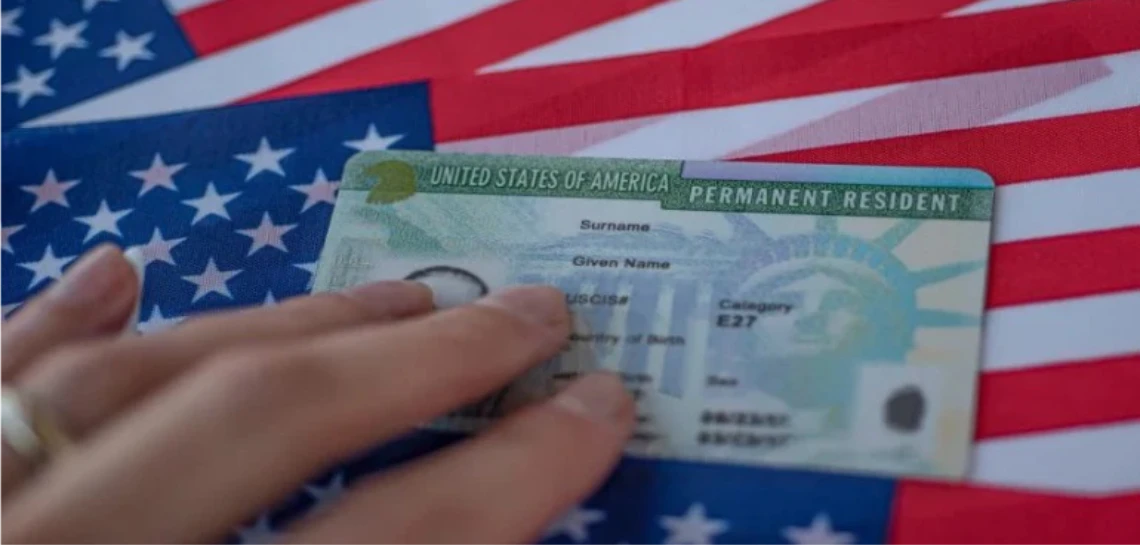
Getting an American green card, also known as lawful permanent residency, is a significant step toward living and working in the United States long-term.
There are several ways to get a green card in the U.S. , each with its eligibility criteria and requirements.
5 Ways To Get A Green Card In The U.S. Are As Follows
- Marry your way in
- Invest Your Way In
- Transfer Your Way In
- Study Your Way In
- Work Your Way In
1. Marry Your Way In
Utilizing marriage as a pathway to secure a green card is a common route for foreign citizens seeking U.S. permanent residency. However, it’s crucial to emphasize the authenticity of the marital relationship. It is because it must be a genuine union and not a marriage of convenience for immigration purposes intent plays a pivotal role.
In broader terms, family-based immigrant visas encompass two categories:
- Immediate Relatives: These visas are granted based on close family ties with U.S. citizens, such as spouses, children, or parents. There are no numerical limits on the number of immigrants in these categories, and the processing is typically swift, often taking approximately a year or so.
- Family Preference: These visas apply to specific, more distant family relationships with U.S. citizens and certain specified relationships with lawful permanent residents (green card holders). These categories have annual numerical limitations, leading to longer processing times, often spanning years and sometimes even decades.
These family-based immigration pathways offer opportunities for foreign nationals to establish their permanent residency in the United States, provided they meet the eligibility criteria and adhere to the respective immigration processes.
2. Invest Your Way In
The EB-5 direct investor program presently allows immigrant investors to obtain green cards by investing a minimum of $500,000 in their businesses, given that they generate ten new jobs. However, this opportunity is temporary and expected to conclude by year-end, potentially raising the required investment amount back to its previous level of $900,000. Additionally, the regional center variant of this program is currently inactive, awaiting congressional approval for its reopening.
3. Transfer Your Way In
Another avenue to secure a green card is through an inter-corporate transfer, a method frequently employed by multinational companies. For instance, if Toyota relocates a manager from its Tokyo office to oversee operations in New York, this could lead to a green card application.
The crucial factors include having a U.S. employer willing to employ you in a managerial or executive role, and this employer must have been conducting business in the U.S. for a minimum of one year, with a qualifying relationship to the entity that employed you in a managerial or executive capacity abroad. Notably, this route does not necessitate labor certification, making it an attractive option for obtaining a green card.
4. Study Your Way In
Another pathway to pursue a green card in the U.S. involves a multi-step journey. Begin by obtaining a student visa to enroll in a U.S. college for a bachelor’s or master’s degree. Upon completing your degree, you’ll be eligible for a one-year post-graduate work permit called Optional Practical Training (OPT).
After this initial year, you can seek your employer’s support in applying for an H1B work visa. Subsequently, your employer can initiate the labor certification process with the Department of Labor, demonstrating the unavailability of qualified American workers for your role.
Finally, you can apply for a green card through the Department of Homeland Security’s U.S. Citizenship and Immigration Services (USCIS). While this route may be lengthy and challenging, it represents a viable option for individuals with skills but limited financial resources or familial connections in the USA.
5. Work Your Way In
You have two potential routes for obtaining a green card in the United States:
- H1B Work Visa and Labor Certification: Under this option, individuals can apply for an H1B work visa, typically used for roles in specialty occupations, exceptional merit, and ability related to Department of Defense research projects, or distinguished fashion modeling.
After securing the H1B, if the employer is willing, they can apply for labor certification and subsequently sponsor the employee for a green card. This pathway can be complex and competitive, mainly due to the H1B visa lottery system, which applies to most cases.
However, there are exceptions, mainly if the job is affiliated with a college, a nonprofit related to a college, or a U.S. governmental research organization. In these cases, there are no numerical limits.
- EB-2 Extraordinary Worker Green Card with a National Interest Waiver: The EB-2 green card option allows individuals to self-petition for permanent residency. To qualify, you must demonstrate either an advanced degree or exceptional ability in your field.
In addition, you must meet specific criteria for a national interest waiver, which includes showing that your work has substantial merit and national importance. You are well-positioned to advance your endeavor, and waiving the usual requirement of a job offer (labor certification) would benefit the United States.
This option provides greater independence from an employer and can be particularly attractive for individuals with advanced degrees or exceptional abilities.
Need Legal Help? Contact An Immigration Lawyer
An immigration lawyer can play a crucial role in navigating the complex and often intricate process of immigration. They have the expertise and up-to-date knowledge to guide individuals through the immigration process, ensuring they understand their options and meet all requirements.
